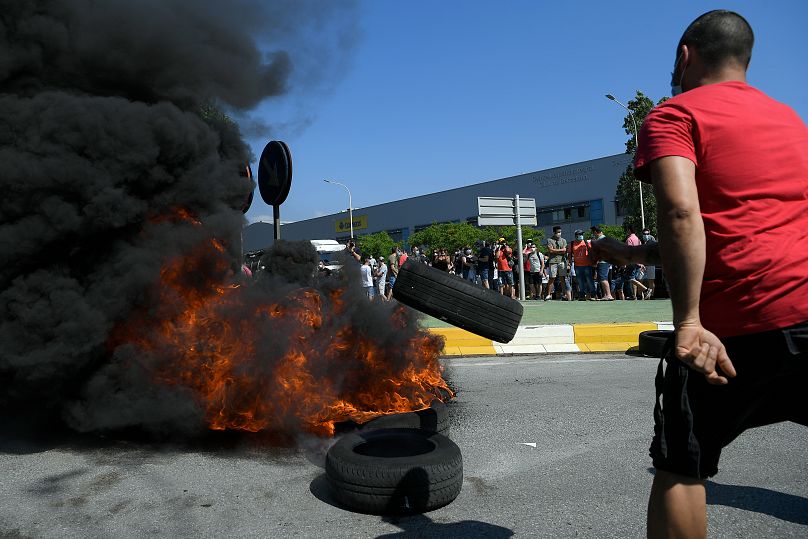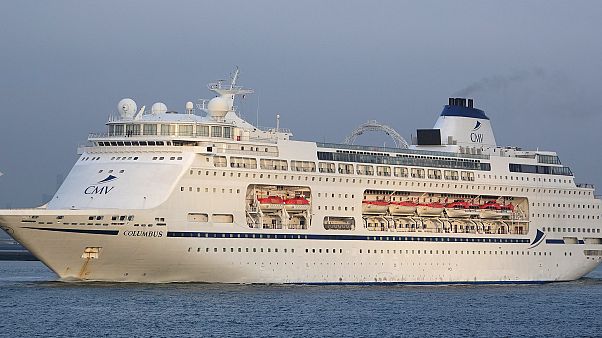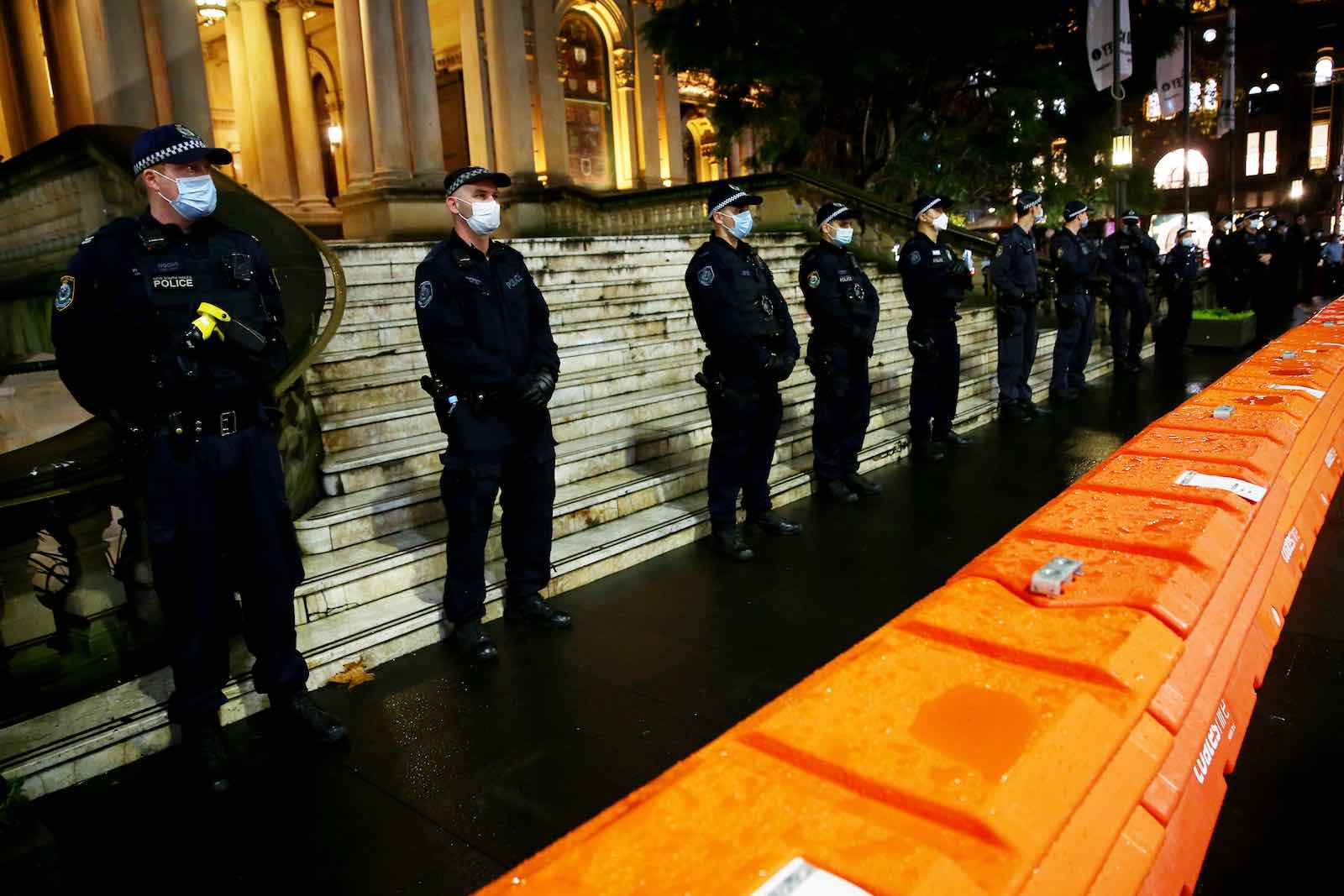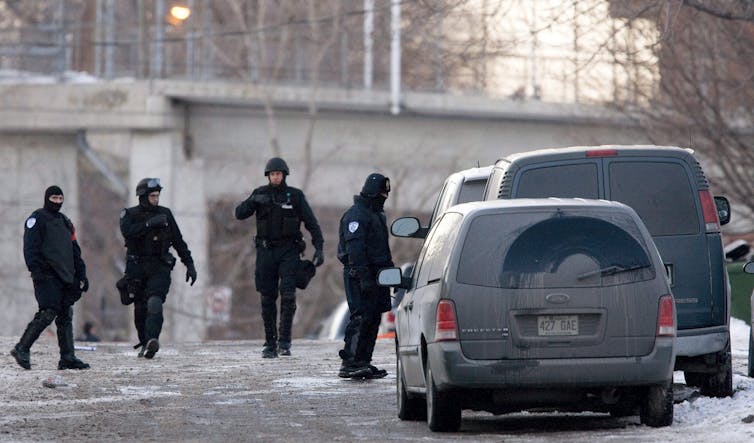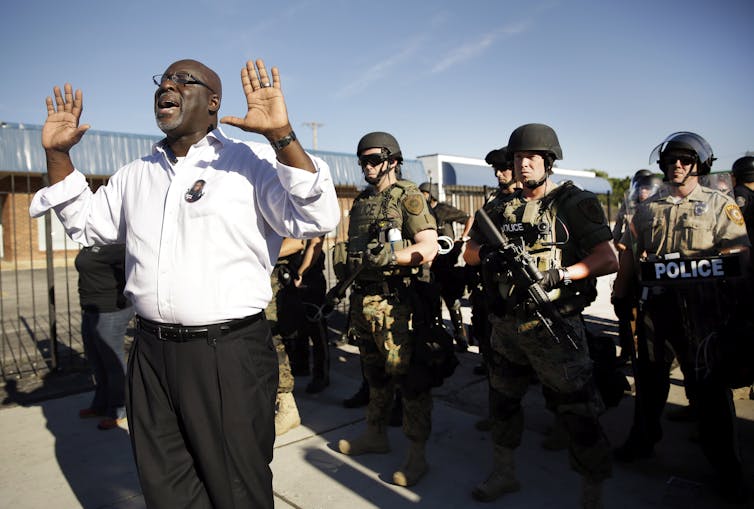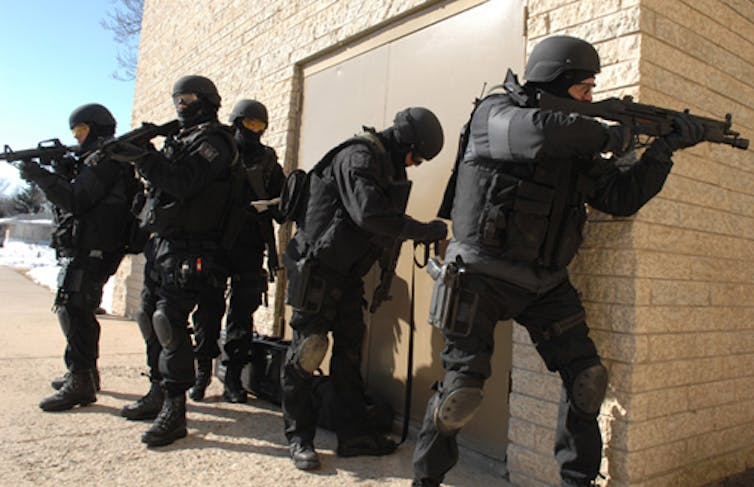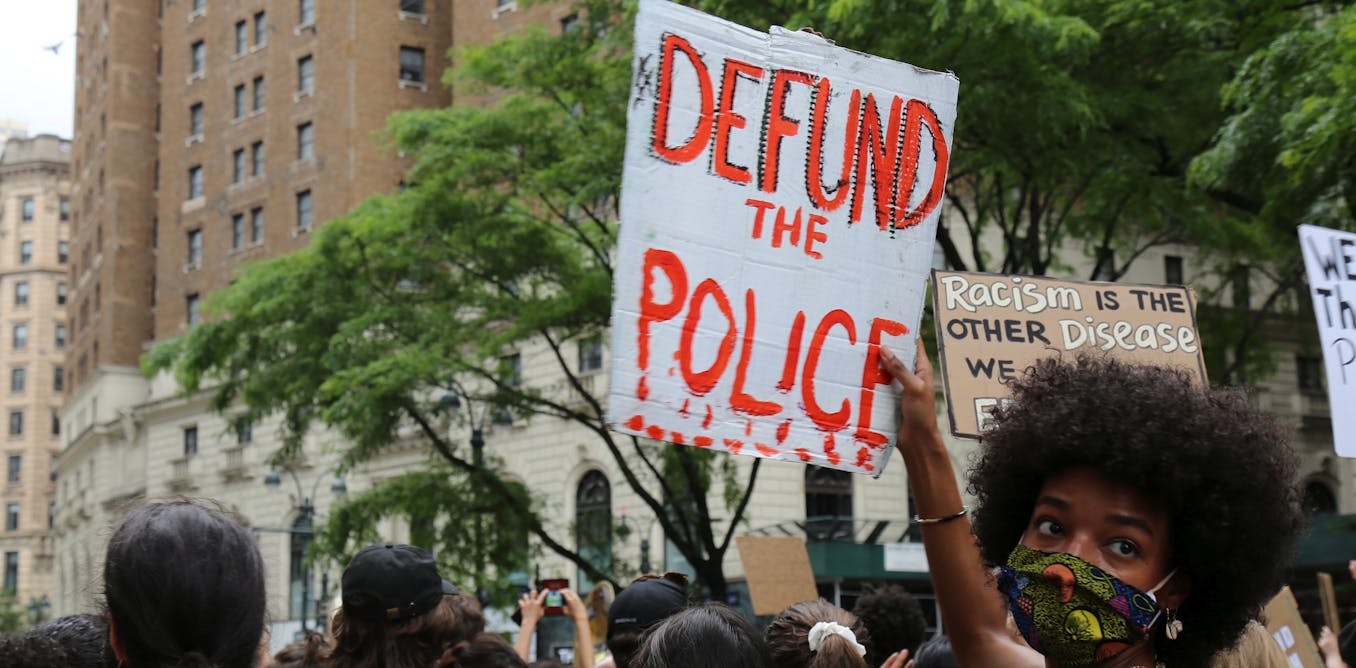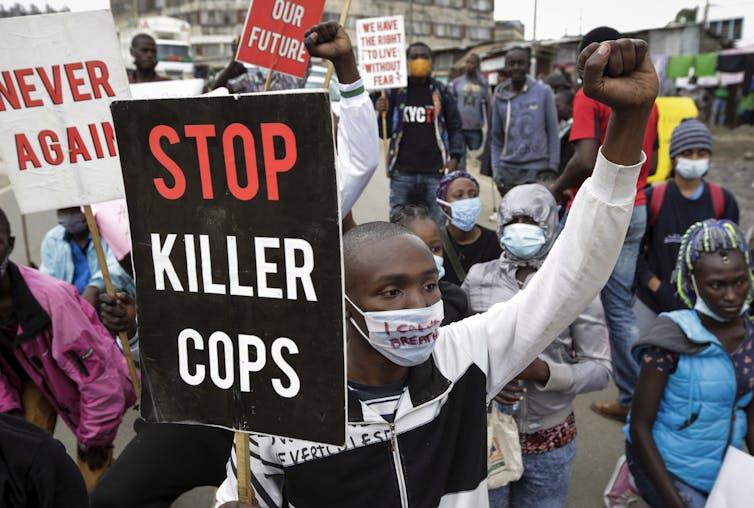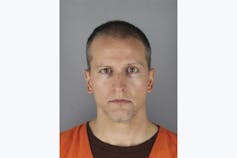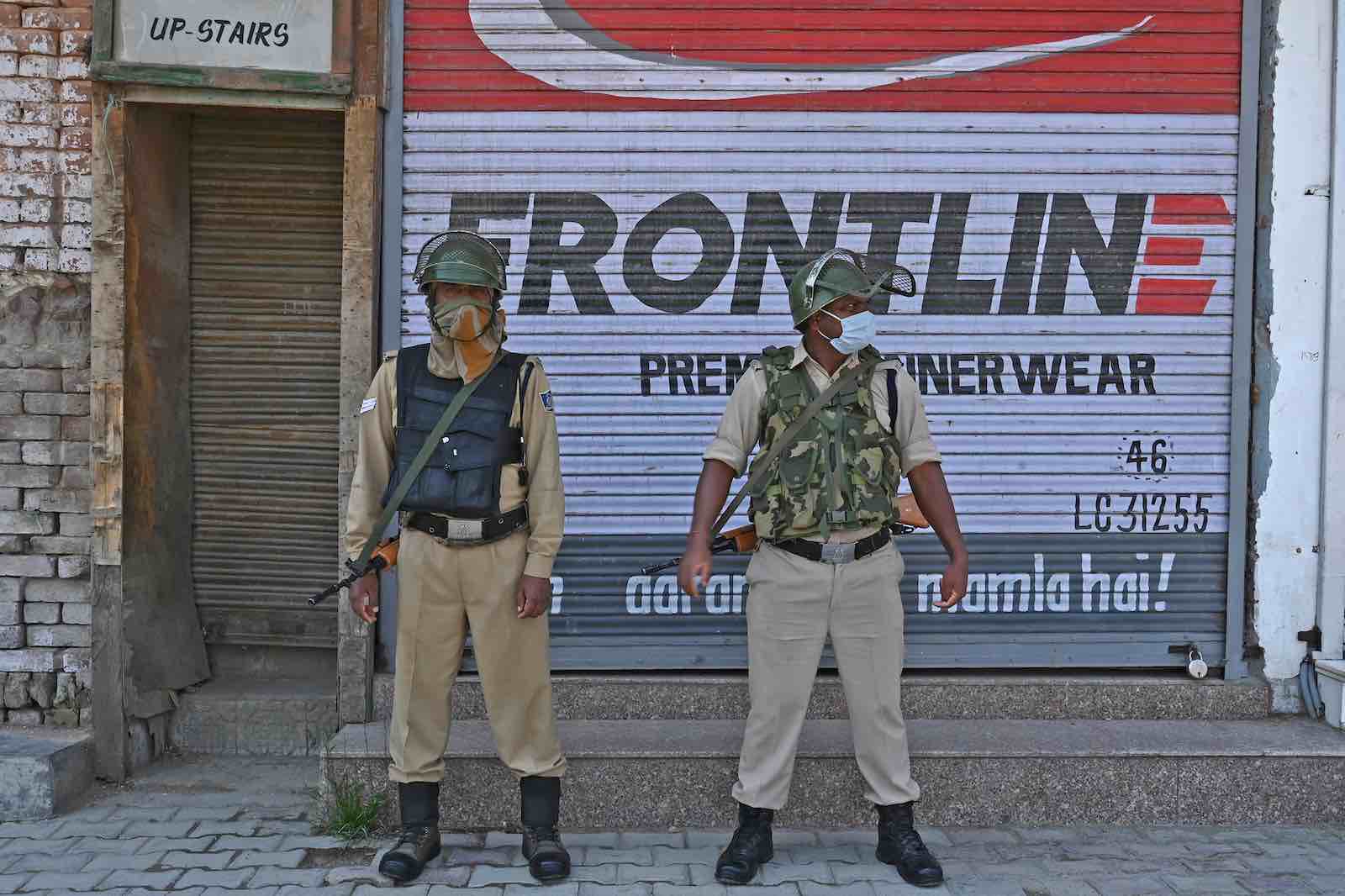By C. L. R. James, the pioneering Trinidadian socialist historian and writer.
Originally published in New International, Vol. IX No. 11, December 1943, pp. 338–341.
An indispensable contribution to the understanding of the role of the Negro in American history is a study of the period between 1830 and 1865. In this article we treat the subject up to 1860.
The basic economic and social antagonisms of the period embraced the whole life of the country and were fairly clear then, far less today. The system of chattel slavery needed territorial expansion because of the soil exhaustion caused by the crude method of slave production. But as the North developed industrially and in population, the South found it ever more difficult to maintain its political domination. Finally the struggle centered, economically, around who would control the newly-opened territories, and, politically, around the regional domination of Congress.
The regime in the South was by 1830 a dreadful tyranny, in startling contrast to the vigorous political democracy of the North. The need to suppress the slaves, who rebelled continuously, necessitated a regime of naked violence. The need to suppress the hostility to slavery of the free laborers and independent farmers led to the gradual abrogation of all popular democracy in the Southern states. Previous to 1830 there had been anti-slavery societies in the South itself, but by 1830 cotton was king and, instead of arguing for and against slavery, the Southern oligarchy gradually developed a theory of Negro slavery as a heaven-ordained dispensation. Of necessity they sought to impose it upon the whole country. Such a propaganda can be opposed only actively. Not to oppose it is to succumb to it.
The impending revolution is to be led by the Northern bourgeoisie. But that is the last thing that it wants to do. In 1776 the revolutionary struggle was between the rising American bourgeoisie and a foreign enemy. The bourgeoisie needs little prodding to undertake its task. By 1830 the conflict was between two sections of the ruling class based on different economies but tied together by powerful economic links. Therefore, one outstanding feature of the new conflict is the determination of the Northern bourgeois to make every concession and every sacrifice to prevent the precipitation of the break. They will not lead. They will have to be forced to lead. The first standard-bearers of the struggle are the petty bourgeois democracy, organized in the Abolition movement, stimulated and sustained by the independent mass action of the Negro people.
The Petty Bourgeoisie and the Negroes
The petty bourgeoisie, having the rights of universal suffrage, had entered upon a period of agitation which has been well summarized in the title of a modern volume, The Rise of the Common Man. Lacking the economic demands of an organized proletariat, this agitation found vent in ever-increasing waves of humanitarianism and enthusiasm for social progress. Women’s rights, temperance reform, public education, abolition of privilege, universal peace, the brotherhood of man — middle class intellectual America was in ferment. And to this pulsating movement the rebellious Negroes brought the struggle for the abolition of slavery. The agreement among historians is general that all these diverse trends were finally dominated by the Abolition movement.
The Negro struggle for Abolition follows a pattern not dissimilar to the movement for emancipation before 1776. There are, first of all, the same continuous revolts among the masses of the slaves themselves which marked the pre-1776 period. In the decade 1820–30 devoted white men begin the publication of periodicals which preach Abolition on principles grounds. The chief of these was Benjamin Lundy. No sooner does Lundy give the signal than the free Negroes take it up and become the driving force of the movement.
Garrison, directly inspired by Lundy, began early, in 1831. But before that, Negro Abolitionists, not only in speeches and meetings, but in books, periodicals and pamphlets, posed the question squarely before the crusading petty bourgeois democracy. Freedom’s Journal was published in New York City by two Negroes as early as 1827. David Walker’s Appeal, published in 1829, created a sensation. It was a direct call for revolution. Free Negroes organized conventions and mass meetings. And before the movement was taken over by such figures as Wendell Phillips and other distinguished men of the time, the free Negroes remained the great supporters of the Liberator. In 1831, out of four hundred and fifty subscribers, fully four hundred were Negroes. In 1834, of 2,300 subscribers, nearly two thousand were Negroes.
After the free Negroes came the masses. When Garrison published the Liberator in 1831, the new Abolition movement, as contrasted with the old anti-slavery societies, amount to little. Within less than a year its fame was nation-wide. What caused this was the rebellion of Nat Turner in 1831. It is useless to speculate whether Walker’s Appeal or the Liberator directly inspired Turner. What is decisive is the effect on the Abolition movement of this, the greatest Negro revolt in the history of the United States.
The Turner revolt not only lifted Garrison’s paper and stimulated the organization of his movement. The South responded with such terror that the Negroes, discouraged by the failures of the revolts between 1800 and 1831, began to take another road to freedom. Slowly but steadily grew that steady flight out of the South which lasted for thirty years and injected the struggle against slavery into the North itself. As early as 1827 the escaping Negroes had already achieved some rudimentary form of organization. It was during the eventful year of 1831 that the Underground Railroad took more definite shape. In time thousands of whites and Negroes risked life, liberty and often wealth to assist the rebel slaves.
The great body of escaping slaves, of course, had no political aims in mind. For years rebellious slaves had formed bands of maroons, living a free life in inaccessible spots. Thousands had joined the Indians. Now they sought freedom in civilization and they set forth on that heroic journey of many hundreds of miles, forced to travel mainly by night, through forest and across rivers, often with nothing to guide them but the North Star and the fact that moss grows only on the north side of trees.
The industrial bourgeoisie in America wanted none of this Abolition. It organized mobs who were not unwilling to break up meetings and to lynch agitators. Many ordinary citizens were hostile to Negroes because of competition in industry and the traditional racial prejudice. At one period in the early ’forties, the Abolition movement slumped and Negro historians assert that it was the escaping slaves who kept the problem alive and revived the movement. But we do not need the deductions of modern historians. What the escaping slaves meant to the movement leaps to the eye of the Marxian investigator from every contemporary page.
By degrees the leadership of the movement passed into the hands of and was supported by some of the most gifted white poets, writers and publicists of their time. The free Negroes, in collaboration with the Abolitionist movement, sometimes by themselves, carried on a powerful agitation. But a very special role was played by the ablest and most energetic of the escaping slaves themselves. These men could write and speak from first-hand experience. They were a dramatic witness of the falseness and iniquity of the whole thesis upon which the Southern case was built. Greatest of them all and one of the greatest men of his time was Frederick Douglass, a figure today strangely neglected. In profundity and brilliance, Douglass, the orator, was not the equal of Wendell Phillips. As a political agitator, he did not attain the fire and scope of Garrison nor the latter’s dynamic power in organization. But he was their equal in courage, devotion and tenacity of purpose, and in sheer political skill and sagacity he was definitely their superior. He broke with them early, evolving his own policy of maintenance of the Union as opposed to their policy of disunion. He advocated the use of all means, including the political, to attain Abolition. It was only after many years that the Garrisonians followed his example. Greatest of the activists was another escaped slave, Harriet Tubman. Very close to these ex-slaves was John Brown. These three were the nearest to what we would call today the revolutionary propagandists and agitators.
They drove the South to infuriation. Toward the middle of the century the Abolitionists and the escaping slaves had created a situation that made compromise impossible.
The Anti-Fugitive Slave Law
In 1848 there occurred an extraordinary incident, a harbinger of the great international movement which was to play so great a part in the Civil War itself. When the news of the 1848 revolution in France reached Washington, the capital, from the White House to the crowds in the streets, broke out into illuminations and uproarious celebration. Three nights afterward, seventy-eight slaves, taking this enthusiasm for liberty literally, boarded a ship that was waiting for them and tried to escape down the Potomac.
They were recaptured and were led back to jail, with a crowd of several thousands waiting in the streets to see them, and members of Congress in the House almost coming to blows in the excitement. The patience of the South and of the Northern bourgeoisie was becoming exhausted. Two years later, the ruling classes, South and North, tried one more compromise. One of the elements of this compromise was a strong Anti-Fugitive Slave Law. The Southerners were determine to stop this continual drain upon their property and the continuous excitation of the North by fugitive slaves.
It was the impossibility of enforcing the Anti-Fugitive Slave Law which wrecked the scheme. Not only did the slaves continue to leave. Many insurrectionary tremors shook the Southern structure in 1850 and again in 1854. The South now feared a genuine slave insurrection. They had either to secede or force their political demands upon the federal government.
The Northern bourgeoisie was willing to discipline the petty bourgeois democracy. But before long, in addition to their humanitarian drive, the petty bourgeois democrats began to understand that not only the liberty of the slaves but their own precious democratic liberties were at stake. To break the desire of the slaves to escape, and to stifle the nation-wide agitation, the South tried to impose restrictions upon public meetings in the North and upon the use of the mails. They demanded the right to use the civil authorities of the North to capture escaping slaves. Under their pressure, Congress even reached so far as to side-track the right of petition. The Declaration of Independence, when presented as a petition in favor of Abolition, was laid upon the table. Negroes who had lived peaceably in the North for years were now threatened, and thousands fled to Canada. Douglass and Harriet Tubman, people of nation-wide fame (Douglass was an international figure) were in danger. There was no settling this question at all. The petty bourgeois democrats defied the South. The escaping slaves continued to come. There were arrests and there were spectacular rescues by pro-Abolition crowds. Pro-slavery and anti-slavery crowds fought in the streets and with the Northern police. Scarcely a month passed but some escaping slave or ex-slave, avoiding arrest, created a local and sometimes a national agitation.
Slaves on ships revolted against slave-traders and took their ships into port, creating international incidents. Congress was powerless. Ten Northern states legalized their rebelliousness by passing Personal Liberty Laws which protected state officers from arresting fugitive slaves, gave arrested Negroes the right of habeas corpus and of trial by jury, and prohibited the use of the jails for runaway Negroes. Long before the basic forces of the nation moved into action for the inevitable show-down the petty bourgeois democrats and revolting slaves had plowed up the ground and made the nation irrevocably conscious of the great issues at stake.
The Free Farmers and the Proletariat
Yet neither Negroes nor petty bourgeois democracy were the main force of the second American revolution, and a more extended treatment of American history would make that abundantly clear if that were needed by any serious intelligence. The great battle was over the control of the public doman! Who was to get the land — free farmers or slave-owners? The Republican Party, as Commons has said, was not an anti-slavery party. It was a Homestead party. The bloody struggle over Kansas accelerated the strictly political development. Yet it was out of the Abolition movement that flowered the broader political organizations of the Liberty Party and the Free Soil Party, which in the middle of the decade finally coalesced into the Republican Party.
It was Marx who pointed out very early (The Civil War in the United States, p. 226. Letter to Engels, July 1, 1861) that what finally broke down the bourgeois timidity was the great development of the population of free farmers in the Northwest Territory in the decade 1850–60. These free farmers were not prepared to stand any nonsense from the South because they were not going to have the mouth of the Mississippi in the hands of any hostile power. By 1860 the great forces which were finally allied were the democratic petty bourgeoisie, the free farmers in the Northwest, and certain sections of the proletariat. These were the classes that, contrary to 1776, compelled the unwilling bourgeois to lead them. They were the basic forces in the period which led to the revolution. They had to come into action before the battle could be joined. They were the backbone of the struggle.
In all this agitation the proletariat did not play a very prominent role. In New England the working masses were staunch supporters of the movement and the writer has little doubt that when the proletariat comes into its own, further research will reveal, as it always does, that the workers played a greater role than is accredited to them. Yet the old question of unemployment, rivalry between the Negroes in the North and the Irish, the latest of the immigrant groups, disrupted one wing of the proletariat. Furthermore, organized labor, while endorsing the Abolitionist movement, was often in conflict with Garrison, who, like Wilberforce in England, was no lover of the labor movement. Organized labor insisted that there was wage slavery as well as Negro slavery, and at times was apt to treat both of them as being on the same level — a monumental and crippling error.
Nevertheless, on the whole, the evidence seems to point to the fact that in many areas the organized proletarian movement, though not in the vanguard, supported the movement for Abolition. Finally, we must guard against one illusion. The Abolition movement dominated the political consciousness of the time. Most Northerners were in sympathy. But few wanted war or a revolution. When people want a revolution, they make one. They usually want anything else except a revolution. It was only when the war began that the abolitionists reaped their full reward. Despite all this Abolition sentiment in the North, and particularly in the Northwest areas, the masses of the people on the whole were not anxious to fraternize with the free Negroes, and over large areas there was distinct hostility. But the free Negroes in the North never allowed this to demoralize them, and the masses of the revolting slaves kept on coming. Between 1830 and 186o, sixty to a hundred thousand slaves came to the North. When they could find no welcome or resting place in the North, some of them went on to Canada. But they never ceased to come. With the Civil War they will come in tens and then in hundreds of thousands.
Abolition and the International Proletariat
From its very beginning at the end of the eighteenth century, the Negro struggle for freedom and equality has been an international question. More than that, it seems to be able to exercise an effect, out of all proportion to reasonable expectation, upon people not directly connected with it. In this respect, the Abolition movement in America has curious affinities with the Abolition movement a generation earlier in Britain.
In Britain, before the emancipation in 1832, the industrial bourgeoisie was actively in favor of abolition. It was industrially more mature than the American bourgeoisie in 1850; the West Indian planters were weak, and the slaves were thousands of miles away. But there, too, the earlier Abolition movement assumed a magnitude and importance out of all proportion to the direct interests of the masses who supported it. Earlier, during the French Revolution, the mass revolts of the Negroes brought home to the French people the reality of the conditions which had existed for over a hundred and fifty years. A kind of collective “madness” on the Negro question seemed to seize the population all over France, and no aristocrats were so much hated as the “aristocrats of the skin.”
The Abolitionist movement in America found not only a ready audience at home but an overwhelming welcome abroad. Not only did Garrison, Wendell Phillips and others lecture in Britain. Frederick Douglass and other Negro Abolitionists traveled over Europe and enrolled many hundreds of thousands in Abolitionist societies. One inspired Negro won seventy thousand signed adherents to the cause in Germany alone. In the decade preceding the Civil War, Uncle Tom’s Cabin was read by millions in Britain and on the continent, and even as far afield as Italy. And masses of workers and radicals in France, Spain and Germany took an active interest in the question. Their sentiments will bear wonderful fruit during the Civil War itself.
It is not enough to say merely that these workers loved the great American Republic and looked forward to the possibility of emigrating there themselves one day. There are aspects to this question which would repay modern investigation and analysis by Marxists. Beard, who has some insight into social movements in America, is baffled by certain aspects of the Abolition movement. [1] Thoroughly superficial are the self-satisfied pratings of English historians about the “idealism” of the English as an explanation of the equally baffling Abolition movement in Britain. It would seem that the irrationality of the prejudice against Negroes breeds in revolutionary periods a corresponding intensity of loathing for its practitioners among the great masses of the people. [2]
“The Signal Has Now Been Given”
The slaves played their part to the end. After Lincoln’s election and the violent reaction of the South, the North, not for the first time, drew back from Civil War. Congress and the political leaders frantically sought compromise. Frederick Douglass in his autobiography gives an account of the shameful attempts on the part of the North to appease the South. Most of the Northern Legislatures repealed their Personal Liberty Laws. And Douglass concludes his bitter chapter by saying:
“Those who may wish to see to what depths of humility and self-abasement a noble people can be brought under the sentiment of fear, will find no chapter of history more instructive than that which treats of the events in official circles in Washington during the space between the months of November, 1859, and March, 1860.” (Life and Times of Frederick Douglass, Pathway Press, 1941, pp. 362–366.)
For a long time even Lincoln’s stand was doubtful. On December 20, 1860, the very day on which South Carolina seceded, Lincoln made a statement which seemed to exclude compromise. However, in a series of speeches which he delivered on his eleven-day journey to Washington, he confused the nation and demoralized his supporters. Even after the inaugural, on March 4, the North as a whole did not know what to expect from him. Marx, as we have seen, had no doubt that the decisive influence was played by the North-west farmers, who supplied sixty-six votes or 36.6 per cent of the votes in the college which elected Lincoln.
But there was refusal to compromise from the South also. Says Douglass:
“Happily for the cause of human freedom, and for the final unity of the American nation, the South was mad and would listen to no concessions. It would neither accept the terms offered, nor offer others to be accepted.”
Why wouldn’t they? One reason we can now give with confidence. Wherever the masses moved, there Marx and Engels had their eyes glued like hawks and pens quick to record. On January 11, 1860, in the midst of the critical period described by Douglass, Marx wrote to Engels:
“In my opinion, the biggest things that are happening in the world today are, on the one hand, the movement of the slaves in America started by the death of John Brown, and, on the other, the movement of the serfs in Russia ... I have just seen in the Tribune there has been a fresh rising of slaves in Missouri, naturally suppressed. But the signal has now been given.”
Fifteen days later, Engels replied:
“Your opinion of the significance of the slave movement in America and Russia is now confirmed. The Harper’s Ferry affair with its aftermath in Missouri bears its fruits ... the planters have hurried their cotton on to the ports in order to guard against any probable consequence arising out of the Harper’s Ferry affair.”
A year later Engels writes to Marx:
“Things in North America are also becoming exciting. Matters must be going very badly for them with the slaves if the Southerners dare to play so risky a game.”
Eighty years after Marx, a modern student has given details which testify to that unfailing insight into the fundamental processes of historical development, so characteristic of our great predecessors. In Arkansas, in Mississippi, in Virginia, in Kentucky, in Illinois, in Texas, in Alabama, in Northwest Georgia, North Carolina, South Carolina – rebellion and conspiracy swept the South between 1859 and 1860. Writes a contemporary after the John Brown raid:
“A most terrible panic, in the meantime, seizes not only the village, the vicinity and all parts of the state, but every slave state in the Union ... rumors of insurrection, apprehensions of invasions, whether well founded or ill founded, alter not the proof of the inherent and incurable weakness and insecurity of society, organized upon a slave-holding basis” (Ibid., p. 352).
The struggle of the Negro masses derives its peculiar intensity from the simple fact that what they are struggling for is not abstract but is always perfectly visible around them. In their instinctive revolutionary efforts for freedom, the escaping slaves had helped powerfully to begin and now those who remained behind had helped powerfully to conclude, the self-destructive course of the slave power.
Footnotes
1. Rise of American Civilization (p. 898): “The sources of this remarkable movement are difficult to discover.” Much the same can be said of the movement in Britain, which embraced literally millions of people.
2. It is something for revolutionists to observe in the past and to count on in the future. Already in England, a country where race prejudice is still very strong, the presence of American Negro soldiers, the prejudice against them of white American soldiers, and the reports of Negro upheaval in America have awakened a strong interest among the English masses.
FROM VERSO BLOG
HE WAS MY FAVORITE LENINIST,
FORMER SECRETARY TO TROTSKY
DURING THE FOUNDATIONAL YEARS OF THE FOURTH INTERNATIONAL
WITH RAYA DUNAYEVSKAYA CREATED A THEORY OF STATE CAPITALISM TO EXPLAIN THE STALINIST SOVIET UNION POLITICAL ECONOMY PRIOR TO AND AFTER WWII
I HEARD HIM SPEAK AT THE U OF ALBERTA THREE TIMES
DURING THE SEVENTIES.
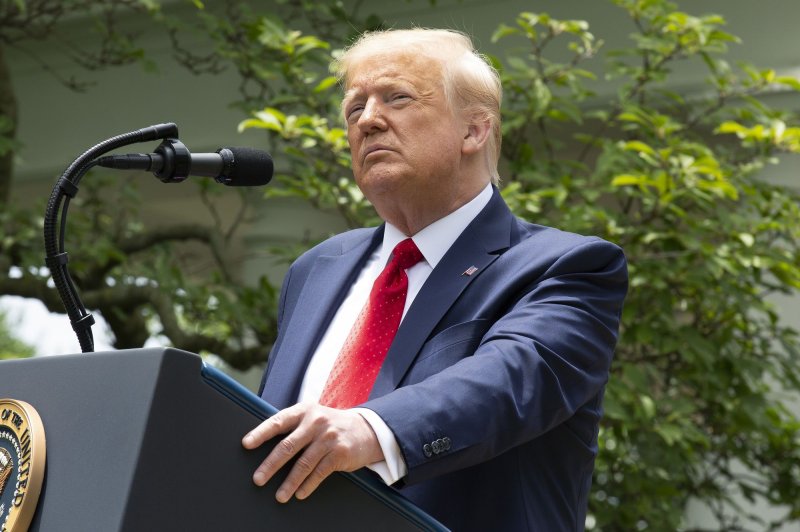
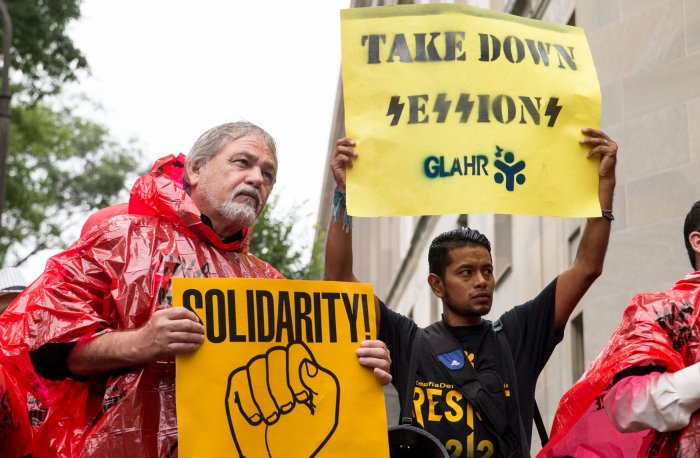
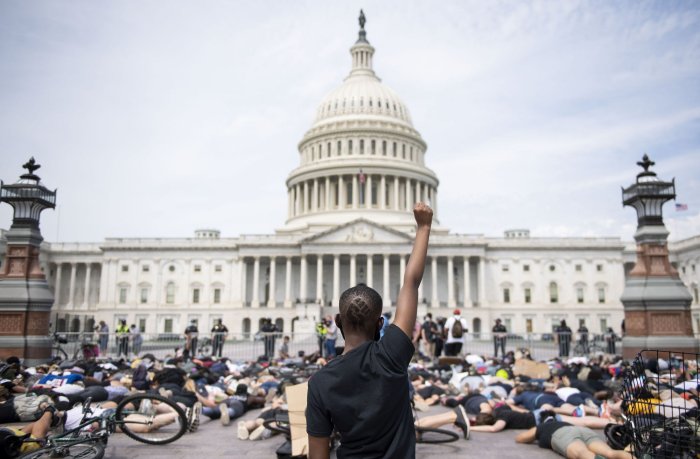
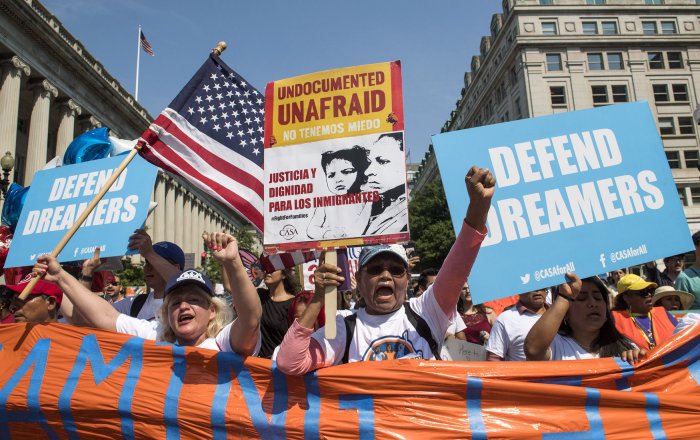

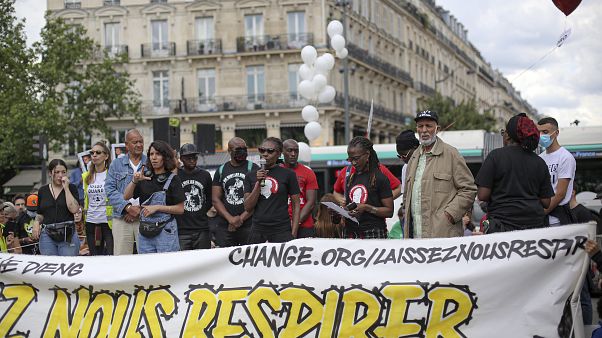
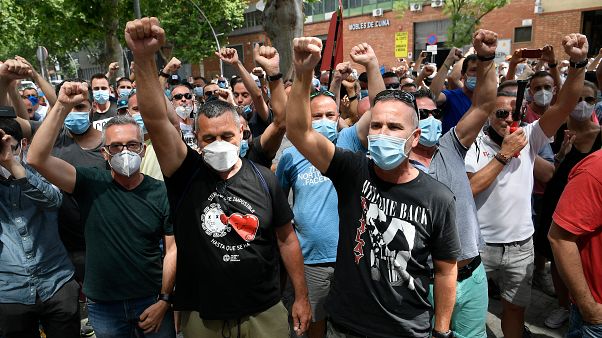
 BP plans to axe 10,000 jobs worldwidePAUL ELLIS/AFP or licensors
BP plans to axe 10,000 jobs worldwidePAUL ELLIS/AFP or licensors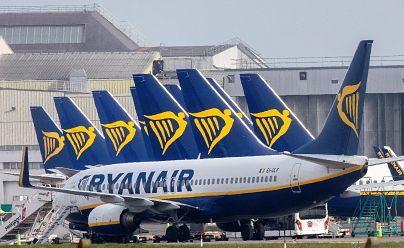 Budget airlines have also been impacted by COVID-19.PAUL FAITH/AFP
Budget airlines have also been impacted by COVID-19.PAUL FAITH/AFP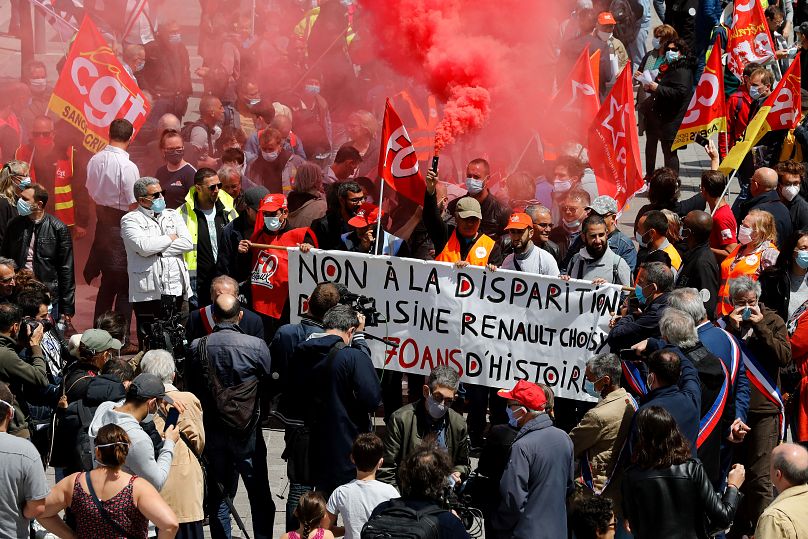
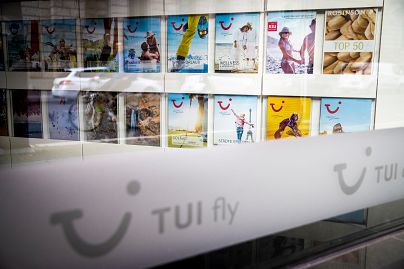
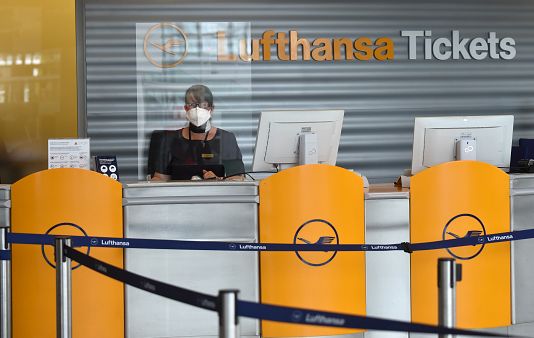 Half of the Lufthansa jobs are expected to go in Germany.CHRISTOF STACHE/AFP or licensors
Half of the Lufthansa jobs are expected to go in Germany.CHRISTOF STACHE/AFP or licensors